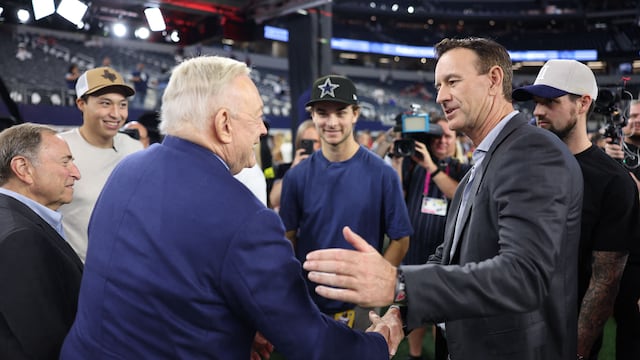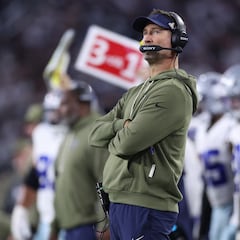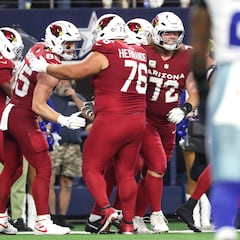As the 2025 NFL trade deadline approaches, we look at the various ways in which they can trim the rosters.

What is the difference between cutting, waiving and releasing in the NFL?
By 4 p.m. ET Nov. 4, 2025, all 32 NFL teams will have to have made their trades for the season. That is the deadline for each team to have finalized their active rosters for the regular season.
A deal for Dallas: Cowboys are finalizing a trade to acquire Bengals MLB Logan Wilson, sources tell me and Todd Archer. Earlier Monday, Jerry Jones told Stephen A. Smith that the Cowboys have made a trade ahead of Tuesday’s NFL deadline. It is expected to be for Wilson, for whom… pic.twitter.com/lhQak0jaHG
— Adam Schefter (@AdamSchefter) November 4, 2025
Cutting down the rosters can be done in several ways - from cuts to trades to injury and other reserve lists. And as far as cuts go, there are two different forms: waiving and releasing.
In general, “cutting” a player just means a team has chosen to part ways with that player. But there is a slight difference between getting waived and getting released.
A player who has accrued less than four seasons in the NFL is waived, while a vested veteran, or a player with four or more accrued seasons, is released. An “accrued season” simply refers to the year a player spends at least six weeks on a team’s 53-man roster. Let’s get into more detail about waiving vs releasing.
Waiving vs Releasing in the NFL
Waive
When a player is waived, it means that their contract is not yet terminated, but rather that they are on a “waiver wire” that makes them available to be “claimed” by other teams.
If another team claims the player, then he joins that team with the same conditions of his current contract. On the other hand, if no team claims him in a certain period of time, typically by midday the next day, his contract is terminated and he becomes an unrestricted free agent.
“Waiving” an injured player is basically informing the league about that player’s injury. The player then goes through the same “waiver wire” process as above, and undergoes one of two options: a certain team puts in a claim for him, or no team claims him. When he’s not claimed, he reverts back to his original team’s injury reserve list. Then, his team can decide whether to keep him or let him go directly with an injury settlement.
Buccaneers waive S Shilo Sanders. (via @tompelissero) pic.twitter.com/kIzcUTWMde
— NFL (@NFL) August 24, 2025
Release
Meanwhile, if a player is “released”, their contract is terminated effective immediately and they are free to sign with any team they want from that point on.
The four years of service time in the NFL is the key to the process. Once that rookie deal is over, a player has the freedom to sign with any team he chooses.
Falcons release kicker Younghoe Koo. pic.twitter.com/XaUz7G00W3
— NFL (@NFL) September 19, 2025
What is the Waiver Wire?
The “waiver wire” is the system that allows all NFL teams to sign younger players who were cut by their previous team.
According to the league, “the waiver period runs from the first business day after the Super Bowl through the end of the NFL’s regular season. Except in rare incidents, the waiver period lasts 24 hours and all waivers are categorized as “no recall” and “no withdrawal”, which means once a club waives a player, it cannot take the player back or change the player’s status, as per the NFL.
The waiver system is based on priority, so teams have an ordered chance to claim a player or “waive” them. When the trade deadline ends, every player that is cut is required to go through waivers with no exceptions.
Related stories
Get your game on! Whether you’re into NFL touchdowns, NBA buzzer-beaters, world-class soccer goals, or MLB home runs, our app has it all.
Dive into live coverage, expert insights, breaking news, exclusive videos, and more – plus, stay updated on the latest in current affairs and entertainment. Download now for all-access coverage, right at your fingertips – anytime, anywhere.


Complete your personal details to comment